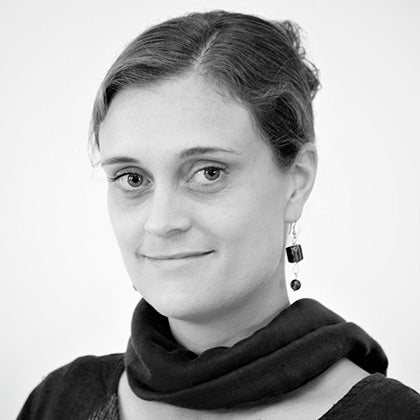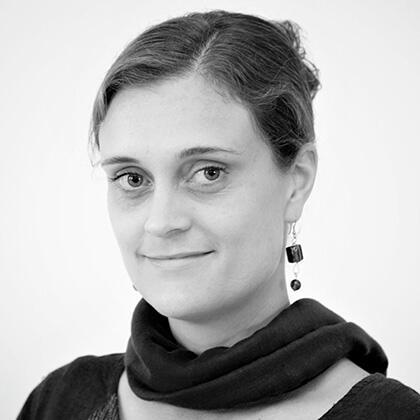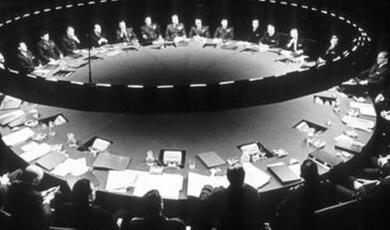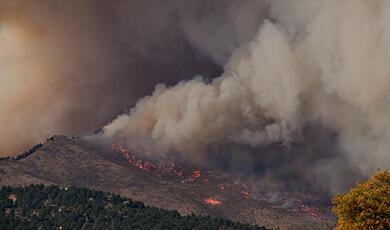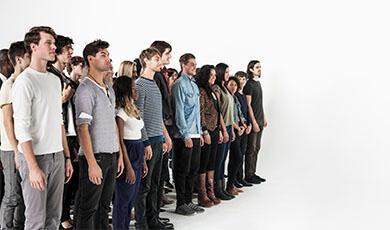Sustainable Energy in Refugee Camps
Share
- Details
- Text
- Audio
- Downloads
- Extra Reading
Most of the world’s 102 million forcibly displaced people – refugees – lack access to reliable, affordable, sustainable energy. Attempts to provide such energy in refugee camps have been marred by governance challenges, and a lack of technical expertise within humanitarian organisations.
But new research discussed in this lecture on the lived experience of refugees is helping cast a light on ways to address it. However, developing inclusive approaches and supporting refugee-led action on energy is no easy task.
** Nb. This lecture was rescheduled from its original date in February
Download Text
Sustainable Energy in Refugee Camps
Dr Sarah Rosenberg-Jansen
10 April 2024
Introduction
Hello and thank you for joining. I’m Sarah Rosenberg-Jansen. I am a Research Associate at the University of Oxford. I’m also an External advisor to the Global Platform for Action on Sustainable Energy in Displacement Settings (the GPA), hosted at UNITAR. My fellowship work at Oxford has been funded by the ISRF, who have helped convene this series, and I am very grateful for their support.
I’ve been working on the topic of energy access in the global south for 15 years, and for the past 10 of those have been focused specifically on humanitarian energy.
My own personal story is in many ways similar to the story I will tell today: one of initial surprise, then confusion and mild outrage, finally reaching possible optimism.
When I started working at DFID – now part of the FCDO – over 10 years ago – energy in refugee and humanitarian settings was not really a topic of discussion and there was very little data or evidence. Since then, myself and dedicated colleagues at Chatham House, Practical Action, and within the UN have worked to change that.
If you’ve joined today, it is likely that you may already have an interest in the energy sector and / or refugee contexts. Which is ideal, as that is what we are going to talk about today.
A quick note for anyone not familiar with energy technologies: if it switches on or off, or gets rapidly hot or cold – it is almost certainly energy.
There are three sections of today’s talk. Firstly, insights into the everyday life of refugees - and where energy is used in refugee camps. Secondly, reflections on how refugee communities access energy – including sustainable and renewable solutions. Thirdly, considerations of governance and some criticisms of the international humanitarian aid system in terms of energy provision.
I’m going to show a lot of photos and images from my time living and working in refugee camps. In Kenya and Rwanda especially.
One thing to note is that much of what I’ll say is not just about energy technologies – but highlights the politics and governance issues embedded within access to energy.
Access to Energy
What access do refugees have to energy? What types of energy technologies, products, and services do they currently use?
Many refugee camps are a mixture of formal and informal dwellings. Some people live in tents, others in small homes with corrugated iron sheets for roofs, some with mud and brick homes. Such as this picture of Kakuma refugee camp in Kenya shows.
I should note that today’s talk will focus on refugee camps in the global south. In other situations – for example refugees living in urban areas in Jordan, or refugee families who have moved to the global north, energy situations are quite different.
Millions of people worldwide are forcibly displaced and lack access to reliable or sustainable energy. Indeed, 94 per cent of forcibly displaced people living in camps do not have meaningful access to power, and 81 per cent lack anything other than the most basic fuels for cooking.
‘No access’ to energy is a phrase commonly used, but actually means no access to sustainable, reliable, or affordable access. For example, many people have torches or burning sticks but not ovens or electricity.
So, what does this actually look like?
In refugee homes, many refugees use three stone fires or small cookstoves for cooking. They often use firewood or charcoal to cook. Use of lots of different small cooking products is common – as is known as fuel stacking. As this picture of a home in Kakuma shows – with a number of small cookstoves being used to cook different foods and boil water.
Many people use small solar panels or torches for lighting. For example - these pictures of a home in Kakuma – where you can see small blue solar panels on top of the roof. These technologies often only offer basic lighting services. Electricity access – for example – the ability to power a computer or charge a mobile phone is uncommon within homes.
Instead, refugees often use electricity outside of their homes. Shops such as this milk bar café in Nyabiheke camp in Rwanda when people can buy cold drinks. Or this phone charging shop in Kakuma camp, where people pay to charge their phones. These businesses also use energy themselves of course – to power fridges, hair clippers, cook meals, etc – to power and fuel the services they offer.
Despite these types of energy, most refugee homes are without modern power. And as this picture of Kigeme camp in Rwanda shows – even when national grid power flows literally over the top of camps, refugee households are often not connected.
There are many types of energy technologies and fuels in these pictures. But what we would understand as ‘modern’ access is absent.
One group who are always connected to power, however, are humanitarian workers. As the photos here show, the offices of the UN and NGOs in refugee camps have power for their computers, TVs, water coolers, air conditions, and of course mobile phones.
However, many of the sources of energy powering and fuelling access are fossil fuels and/or unsustainable. For example, diesel, wood, charcoal, kerosene, or gas.
Sustainable Access
The good news is that increasingly, more is being done to switch to renewable and sustainable sources.
The most common form of sustainable access is through solar power technologies. For example, the solar panels here within Kakuma refugee camp. The sector is not ‘picking winners’ here, but the reality remains that most solutions are solar based. This is mostly as solar is cheap and easy to access, and doesn’t require big installations such as wind turbines or biogas.
In terms of sustainable access, NGOs and the UN sometimes supply small solar lanterns to families upon arrival.
There are also some clean cooking projects by NGOs and private-sector companies. As these pictures of simple cookstoves show, these projects often only supply individual standalone technologies that don’t fully meet a household’s energy needs.
What the images here don’t really show is the huge range of cooking fuels and technologies needed – often a single household will have multiple cooking solutions. Just as many people in the global north will have a kettle, an oven, a microwave, a grill, a hob, and possibly other cooking appliances – such as bread-makers, rice cookers, slow cookers, waffle makers, etc etc. Cooking is an inherently important part of life and sadly most humanitarian clean cooking projects are not able to meet all these needs.
In terms of public spaces - in some locations, public streetlighting powered by solar has also been installed. But such sustainable technologies have not been rolled out systematically across all refugee camps.
Some UN operations and food distribution centres also have their own solar energy solutions. Which can range from medium scale solar mini-grids to individual panels for lighting.
Most solar solutions within camps, however, are found within the informal markets created by refugees themselves. For example, the solar panels and red solar lanterns shown here within Kakuma refugee camp.
Increasingly, solar mini-grids are being used by humanitarian operations to power their organisations and connect refugee households and businesses. For example, this picture of one of UNHCR’s energy systems in Jordan. However, such large-scale installations are uncommon in sub-Saharan Africa - where access to energy for refugee families is still minimal.
How Energy is Accessed
So now I’ll talk a bit about how energy is accessed.
Many would assume that the UN is providing and supplying energy access in refugee camps. However, the supply of energy is far more complicated than first appears. To understand how energy is accessed in refugee camps, let’s revisit some of the previous pictures to understand who supplies power and fuel in those examples.
For these cookstoves, people are buying stoves and charcoal from the local shops and markets. They are also buying matches, cooking pans, pots, etc. In most cases the UN distributes firewood sticks, and many refugee families use this first as they are free. But once their firewood supply runs out, they have to buy other sources of energy. The UN provides some firewood but not enough to meet the cooking needs of most families, and so refugees must buy additional cooking fuels. In the majority of cases, humanitarian provision of cooking energy can be characterized as partial.
For lighting in refugee homes. In some households, the UN and NGOs have given out lanterns for lighting for free. However, when these break or when a family needs more light – they will buy additional products from local markets. For example, the torches, batteries, lightbulbs, and other electrical products seen in the shop in the picture.
Humanitarian provision of home lighting technologies can be said to be intermittent – not in the electrical sense, but rather in the temporal sense. Some lighting is provided (through initial lanterns) but then families are left in the dark.
Beyond lighting, families need all sorts of electricity products. For example –TVs and radios, extension cables, charging devices, dvd players, etc, etc.
AND electricity services. For example - mobile charging, internet access, scanning and printing, tv watching spaces, etc. There are a considerable number of shops selling these types of energy access in larger camps.
And even in very small camps – almost always at least one refugee business selling these services and products. Often there is a mix of people from the host community and refugee camp running different businesses to sell energy. Here, the humanitarian provision of electricity for homes can be characterized as absent. As local markets are the main suppliers of electricity within refugee camps.
This cinema is a business that has been set-up using solar to power its equipment, projector, and lighting. Refugees pay to see films and watch tv there. In this example – UN provision of energy for this cinema was accidental, as the solar panel in use was forgotten about by a humanitarian organization and ‘borrowed’ by the business owner.
Very often you will also find privately owned generators with refugee entrepreneurs selling electricity connections. Such as these photos from Kakuma camp in Kenya. Not necessarily safe spaces to be in, but are providing electricity. Which is seen as a key service by the refugee families living in the camps.
So far, we have seen a rather negative picture of the humanitarian supply of energy: with provision being characterised as partial, intermittent, absent, and accidental.
For institutions and humanitarian workers, however, energy access is provided in a different way. Often this access is in the form of a diesel generator powering offices and humanitarian living quarters. Or by connection to the local national grid, where the government or a national energy supplier connects the organisations.
As highlighted by the previous pictures, informal energy markets exist within refugee camps. Most of these businesses are created and run by refugees themselves. This raises some questions - What does the existence of these markets say about humanitarian organisations? Are humanitarian agencies providing enough energy if informal markets are always there? And what is the political system surrounding energy supply in refugee camps?
Governance of Access
What does all this mean in terms of ‘who is in charge’ of access to energy in refugee camps? Who Supplies? And critically – who decides?
So first, let’s ask - Who is supplying energy in refugee camps? National governments? Connect some displaced households and businesses in countries such as Jordan and the global north.
Humanitarian agencies? Supply their own energy and own their own generators or pay for grid connections. Fund the provision of firewood or basic cooking fuels.
NGOs? Supply their own energy and own their own generators or pay for grid connections. Deliver projects to some supply refugees with cookstoves, solar lanterns or home systems, and sometimes mini-grids.
Displaced people themselves? Buy their own energy – lanterns, cooking fuel, or electricity connections. Pay a disproportionate amount for their energy. Estimated to be between 15-40% of their disposable income on energy. ‘Self-provision’ and through local markets.
Of all these, refugees themselves access most of their energy needs independently of the humanitarian system and governmental provision!
Underneath almost all energy access in refugee camps is the privatised energy sector, energy companies, and businesses selling energy.
Most countries have a privatised energy sector. And there are energy companies and energy businesses in every country in the world. And from this energy sector - NGOs and humanitarian agencies buy generators and diesel- as well as the energy technologies required for their projects and operations. And as the previous slides have shown, most refugees also access energy through local markets and refugee-owned businesses.
When preparing this talk, one colleague mentioned that many people might be surprised by this fact. Perhaps even scandalised by the idea that ‘profit’ is being made off ‘vulnerable’ refugees. But energy access challenges these conceptions. Especially the concept of refugee energy entrepreneurs and how refugee businesses supply energy within their communities.
As many people in refugee camps want (and are able to work) and so create energy businesses as one of the key areas not provided by humanitarian system. Overall, there is a very complex ecosystem of actors and supply networks.
So - now we can turn to - who decides and who governs this supply?
Who Governs Energy in Displacement Settings? This is a very difficult question to answer.
Humanitarian agencies, development agencies, implementing partners, and NGOs, and research organisations, donors, and the private sector – all involved in very complex ways.
On one hand, one of the reasons we founded the GPA was to offer coordination and soft governance functions. On the other hand, the vast majority of organisations and individuals in the sector act independently and develop energy programming and responses as they see fit. The governance systems surrounding the supply energy is very complex.
In fact, the governance of refugee camps might be seen as a coalition of actors – working together to produce very mixed results.
To sum up, a few key issues with the governance of energy in refugee camps.
Humanitarian responses on energy are often chaotic and the governance of sustainable energy for refugees is highly complex. Academic evidence.
Energy is not governed in a traditional way within the UN system and most refugees access energy independently of the UN and NGOs. Academic evidence.
Refugees are not included in decision-making on energy and displaced people are being left behind in the global sustainable energy transition. Lived experience evidence.
Reflections and Resources
To end, some thoughts and resources.
What does it all this mean? When we take a step-back and reflect on this story as a whole? We see a picture of chaos embedded within the provision of sustainable energy in refugee camps. We also see refugees acting independently of the humanitarian system – does this challenge the whole purpose of humanitarian agencies? And finally, a picture of exclusion: energy is an excluded issue within humanitarian action and refugees are all too often excluded in the provision of national and international energy solutions.
One thing I’ve reflected on considerably in my research is how political the humanitarian energy space is. It may sound banal to say ‘It’s all political’ – because what isn’t?
But overall, I’ve found that energy is fundamentally viewed as a technological problem. If we can just get the ‘right’ technology and equipment to the ‘right’ people, then the problem will be solved. But it isn’t, and small scale-solutions such as individual solar lanterns aren’t going to provide quality of life.
Different choices are being made in different locations. For example, refugees in camps in Rwanda only receive limited support - whereas in Jordan entire mini-grids have been constructed. We need to start asking, who is making those choices and how?
Achieving energy justice in displacement settings is about both access to sustainable and reliable energy, and also about access to decision-making and choices on energy.
I would encourage anyone who is interested in these political and inclusion issues to read the GPA’s new policy report on inclusivity in humanitarian settings.
Political challenges and systematic barriers reinforce the exclusion of displaced people in humanitarian energy planning and implementation.
There is a need for inclusivity across the policy and practice spectrum. Various actors are trying to push for a more ‘just’ and equal system, including supporting displaced people in accessing policy and decision-making, jobs, research and innovation, partnerships and investment, and inclusive systematic change within the humanitarian energy sector. But there are a great many political barriers and vested interests getting in the way of this.
However, there are parts of the humanitarian system that are deeply colonial and racist. An ‘anthropology of institutions’ is essential to understand how and why these systems and practices continue.
https://www.humanitarianenergy.org/thematic-working-areas/thea-programme/
https://www.humanitarianenergy.org/assets/resources/Inclusivity_Outlook.pdf
I’m often asked ‘what can I do directly to support refugees’.
I would encourage anyone to find a way to support refugees directly – rather than through large UN type organisations. For example, using a platform like Give Directly or Kiva. https://www.givedirectly.org/refugees/
Or support high-quality Humanitarian Energy Programming directly.
For example, by supporting an organisation like Ashden and their humanitarian energy award. https://ashden.org/awards/powering-refugees-and-displaced-people/
Which provides funding to refugee entrepreneurs who are working within their communities to supply sustainable energy solutions.
There are lots of further resources available on this topic. Especially on the GPA’s website at HumanitarianEnergy.org
Including the GPA State of the Humanitarian Energy Sector report series.
For any academics working on this topic, there are also a number of journal papers and a Zotero library with considerably more detail. I also have a book on this topic coming out with Berghahn in October this year.
https://www.sciencedirect.com/science/article/pii/S2214629622002821
https://academic.oup.com/jrs/advance-article-abstract/doi/10.1093/jrs/feac026/6588151
https://www.zotero.org/groups/4386168/humanitarian_energy_research_library/library
I also have a book out on these topics in October – Voices in the Dark – published as part of the Berghahn Forced Migration Series.
https://www.berghahnbooks.com/title/Rosenberg-JansenVoices
Thank you so much.
© Dr Sarah Rosenberg-Jansen, 2024
References and Further Reading
Al-Kaddo, H., Rosenberg-Jansen, S., 2021. Definitions and Differences: The Evolving Space of Energy Access in Humanitarian Energy. (Briefing Paper No. 3), HEED Briefing Paper Series. Coventry University, Coventry UK.
GPA, 2022. The State of the Humanitarian Energy Sector: Challenges, Progress and Issues in 2022. Global Platform for Action (GPA) on Sustainable Energy in Displacement Settings. UNITAR, Geneva Switzerland.
Grafham, O., 2022. Energy for the most vulnerable remains a distant hope. Chatham House, London UK.
Lahn, G., Grafham, O., 2015. Heat light and power for refugees: saving lives, reducing costs. Chatham House, London UK.
Lehne, J., Blyth, W., Lahn, G., Bazilian, M., Grafham, O., 2016. Energy services for refugees and displaced people. Energy Strategy Reviews 13–14, 134–146.
Rosenberg-Jansen, S., 2022a. The Secret Life of Energy in Refugee Camps: Invisible Objects, Technologies, and Energy Systems in Humanitarianism. Journal of Refugee Studies 1–22. https://doi.org/10.1093/jrs/feac026
Rosenberg-Jansen, S., 2022b. The emerging world of humanitarian energy: A conceptual research review. Energy Research & Social Science 92, 102779. https://doi.org/10.1016/j.erss.2022.102779
Rosenberg-Jansen, S., 2019. Rethinking Energy Economies for Refugees. URL https://www.rethinkingrefuge.org/articles/rethinking-energy-economies-for-refugees
UNITAR, 2018. The Global Plan of Action for Sustainable Energy Solutions in Situations of Displacement (GPA): Framework for Action. UNITAR, Geneva Switzerland.
© Dr Sarah Rosenberg-Jansen, 2024
References and Further Reading
Al-Kaddo, H., Rosenberg-Jansen, S., 2021. Definitions and Differences: The Evolving Space of Energy Access in Humanitarian Energy. (Briefing Paper No. 3), HEED Briefing Paper Series. Coventry University, Coventry UK.
GPA, 2022. The State of the Humanitarian Energy Sector: Challenges, Progress and Issues in 2022. Global Platform for Action (GPA) on Sustainable Energy in Displacement Settings. UNITAR, Geneva Switzerland.
Grafham, O., 2022. Energy for the most vulnerable remains a distant hope. Chatham House, London UK.
Lahn, G., Grafham, O., 2015. Heat light and power for refugees: saving lives, reducing costs. Chatham House, London UK.
Lehne, J., Blyth, W., Lahn, G., Bazilian, M., Grafham, O., 2016. Energy services for refugees and displaced people. Energy Strategy Reviews 13–14, 134–146.
Rosenberg-Jansen, S., 2022a. The Secret Life of Energy in Refugee Camps: Invisible Objects, Technologies, and Energy Systems in Humanitarianism. Journal of Refugee Studies 1–22. https://doi.org/10.1093/jrs/feac026
Rosenberg-Jansen, S., 2022b. The emerging world of humanitarian energy: A conceptual research review. Energy Research & Social Science 92, 102779. https://doi.org/10.1016/j.erss.2022.102779
Rosenberg-Jansen, S., 2019. Rethinking Energy Economies for Refugees. URL https://www.rethinkingrefuge.org/articles/rethinking-energy-economies-for-refugees
UNITAR, 2018. The Global Plan of Action for Sustainable Energy Solutions in Situations of Displacement (GPA): Framework for Action. UNITAR, Geneva Switzerland.
Part of:
This event was on Wed, 10 Apr 2024
Support Gresham
Gresham College has offered an outstanding education to the public free of charge for over 400 years. Today, Gresham College plays an important role in fostering a love of learning and a greater understanding of ourselves and the world around us. Your donation will help to widen our reach and to broaden our audience, allowing more people to benefit from a high-quality education from some of the brightest minds.


 Login
Login
